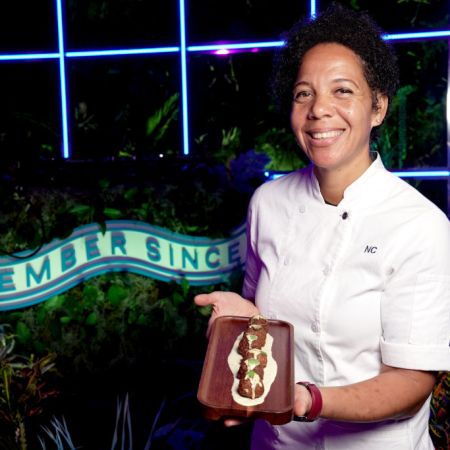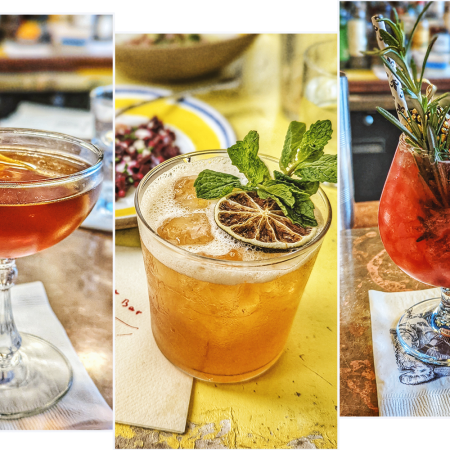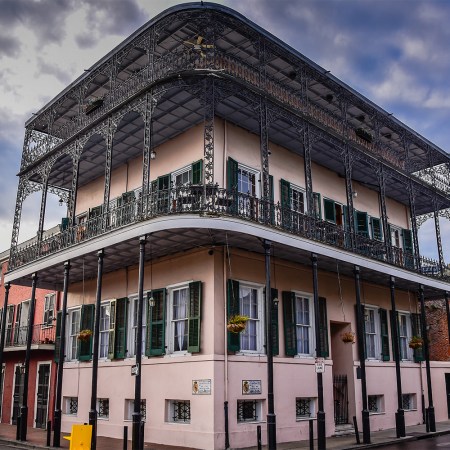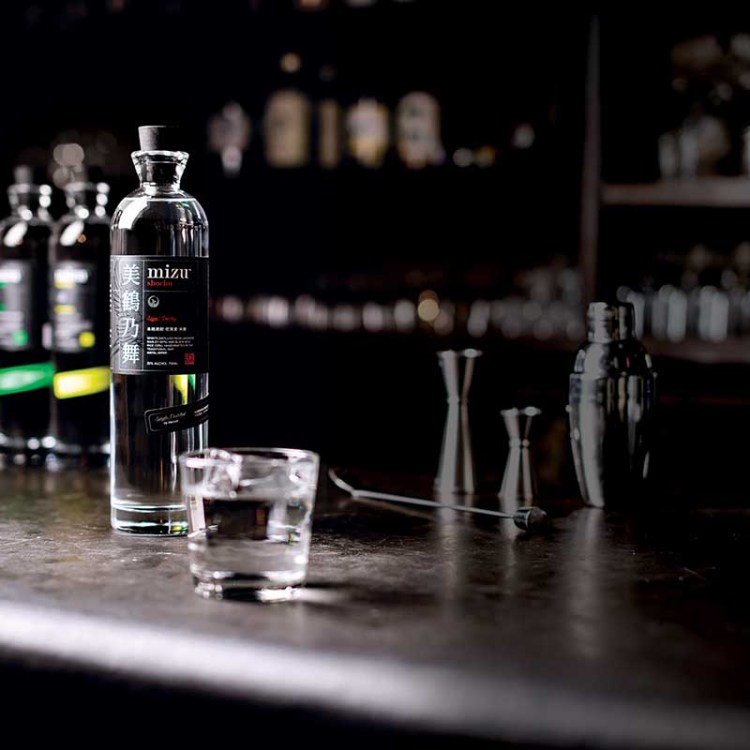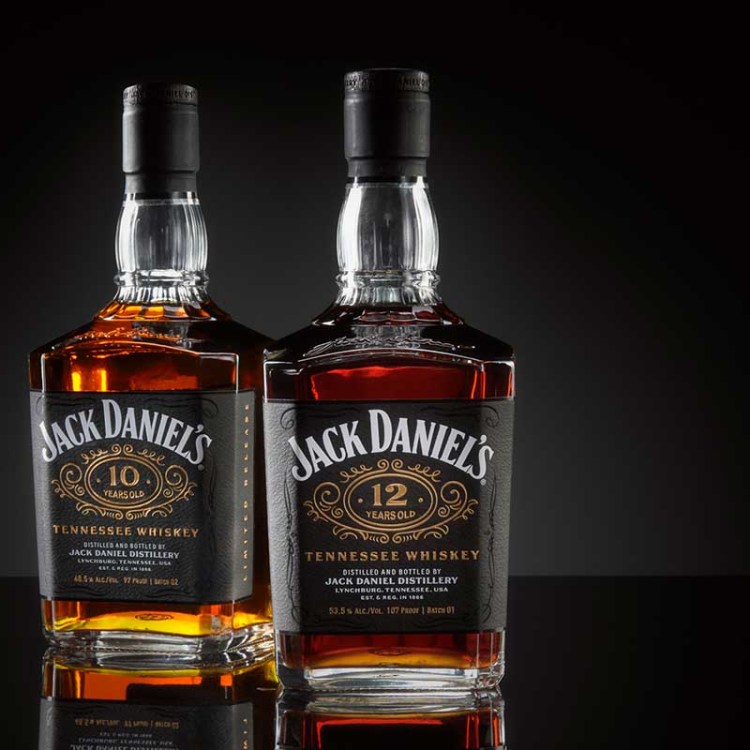“Everything in New Orleans is at least a little made up.”
My friend Drew, who’s lived and tended bar in the Big Easy for years, acquiesced as much the other night over a couple beers at Markey’s in the Bywater. He wasn’t throwing shade. When French settlers first cleared this boggy crescent of land pinched inside a fortuitous hairpin of the Mississippi River in the early 18th century, it provided safe harbor for fast-talking fabulists gifted in the art of fudging for financial and social gain.
“Early New Orleans was a place of reinvented identities, a crossroads of improvisation,” writes Lawrence N. Powell in The Accidental City. “People came there to make themselves anew.” Disgraced Old World aristocrats expunged from their family wills set up around the fast-growing port, adopting new names and flattering faux ancestries. Bourgeois hucksters mixed with blue-collar colonists, freed slaves, Amerindians and a motley international class of gamblers, smugglers and pirates, starting the slow simmer of African, Caribbean, French, Spanish and indigenous additives that is the New Orleanian identity.
Gloriously unburdened by facts, this citizenry set the tone for America’s most folkloric city, a place where documented history and dubious myth enjoy equal footing in the urban endnotes. The dynamic naturally permeates the drinking culture, too. Of all the famous recipes “from” here, none inspires consternation quite like the Sazerac — the official cocktail of New Orleans, in spirit and in law.
Rye, sugar, Peychaud’s bitters and a murmur of Herbsaint served up in a rocks glass, the Sazerac would fit right in with the fleur-de-lis, Mardi Gras throws and Professor Longhair on the Mount Rushmore of unmistakable NOLA iconography. “If New Orleans cocktails were a basketball team, it’s pretty clear which ones would be starters,” writes Sarah Baird in her book New Orleans Cocktails. “The Sazerac would get all the pyrotechnics, flames shooting up when it headed out onto the court to an uproar of applause.” (Cue brass band cover of “Sirius.”)
But despite its ubiquity, there’s no definitive answer as to who first made it, or where, or when. Its most-repeated origin story, as cocktail historian and Sazerac realist David Wondrich puts it, has “more holes in it than a Hawthorne strainer.” But a dearth of receipts has done little to dull its marketing potential — especially in the eyes of the company that manufactures three of its four ingredients.
This past October’s opening of the ambitious Sazerac House, conceived by the Louisiana-born liquor brand of the same name, raised a question for me muddier than the banks of Lake Pontchartrain in June: How do you build a museum around a drink no one really agrees on?

To be clear, invoking the M-word was my move, not Sazerac’s. Differentiating itself from the nearby Museum of the American Cocktail, the company prefers loftier, if less studious, language. “We are so proud to have what we now consider New Orleans’ ‘Immersive Spirited Experience,’” general manager Miguel Solorzano announced on opening day, as a queue of local businessfolk christened a showcase Peychaud’s bottling line, part of a high-gloss bitters exhibit teasing what botanicals might go into the guarded formula.
A consolidation of two circa-1860s Central Business District buildings Sazerac purchased from the adjacent Sheraton Hotel, the 48,000-square-foot attraction really was designed to commandeer the senses, just one block removed from the prescription stimulant that is the French Quarter. In addition to the bitters-making setup, the building features a 500-gallon still demonstrating its Sazerac Rye production on a small scale (most of it happens in Kentucky). On the second level, there are slick interactive stations staffed by “virtual bartenders” — the drinks are 2D, but samples are available elsewhere — plus sections on the heritage of house brands like Buffalo Trace, Southern Comfort, Ojen and of course Herbsaint, the local absinthe alternative that gives a Sazerac its licorice glimmer.
The facility’s third floor, meanwhile, dedicates significant attention to the company’s namesake, patented drink. And for the most part, it skillfully sidesteps the many fuzzy fables associated with it — primarily, that it was the ur-concoction that gave birth to the term “cocktail.”
Most all the truthiness plaguing the Sazerac’s creation myth can be traced back to one guy: Stanley Clisby Arthur, a newspaperman who wrote 1937’s Famous New Orleans Drinks and How to Mix ‘Em. As Arthur tells it, a young man of French extraction named Antoine Peychaud fled the slave rebellion in present-day Haiti for New Orleans in 1793, bringing his “secret family formula” for bitters with him. He’d eventually open an apothecary, where he got into the habit of serving brandy, enhanced with those bitters, in a coquetier, or egg cup. Over time, “those whose French pronunciation was imperfect” mushed that word into “cocktail,” and the popularity of this combination would soon spread throughout the city, and then the world.
This is not true. Dogged drink detectives like Wondrich and Philip Greene have committed ample time to breaking down why; suffice it to say that the earliest recorded use of “cocktail” came in 1806, and Peychaud was born in 1803. As appealing as the thought of a French toddler feeding hooch to a pharmacy full of red-cheeked roustabouts may be, it just ain’t what happened. “The more you read Stanley Clisby Arthur, the more dubious his claims become,” author Greene, a descendant of Peychaud’s, tells me. “He was not a very reliable correspondent. He was just weaving folklore in with his reporting.”

While Sazerac’s website still tells this fish tale, the Sazerac House is far more demure on Peychaud’s role in inventing the drink. Several displays hedge with the versatile “According to legend,” while native daughter Patricia Clarkson, narrating a looping video, opts for the silkier “Legend suggests…”
Gallagher & Associates, the creative firm also responsible for the National WWII Museum a few blocks away, is much more academic in chronicling how the company — and the drink — got its name. Around 1650, the Sazerac family began producing Cognac on its estate in Charente in western France. Two centuries later, on this very same city block, liquor dealer John B. Schiller opened the first Sazerac Coffee House, showcasing the Sazerac de Forge et Fils brandy he brought into New Orleans. This import business and its associated bar changed locations and hands a bunch between then and Prohibition, as did the complexion of its most popular cocktail — Cognac to rye, absinthe to Herbsaint, and even an expansion into pre-bottled retail territory in 1901. (Patented in the 1880s, Peychaud’s bitters remained steadfast.)
Though dates vary slightly depending on who you ask and where you look, the Sazerac House shows its work here, providing a legitimate chain of custody illustrating how the modern Sazerac Company came to be. All this chronology still doesn’t settle the question of the cocktail’s undisputed creator. But does that, or any of this, actually matter?
Local bartenders will gently remind you that most patrons, wisely focused on fun and not frivolous scholarship, really don’t give a shit. “The vast majority of drinkers will never hear any story about a drink like the Sazerac,” says Nicholas Jarrett, who tends bar at Cure, where the dusty old classic is among its top sellers. “Of the handful who do, very few will care about the actual origin.”
A scribe like Greene, who’s very much in the business of caring about such things, cites the recent case of the Seelbach, a supposed historic Louisville cocktail whose backstory was revealed to be a total fabrication. “At first, I was almost embarrassed,” says Greene, who gives regular lectures on cocktail history. “Like, wow, I’m out there telling stories like this, and it was a lie. And then I thought to myself, OK, so what? This is entertainment first, and everything else second. It just makes you chuckle and remember how unimportant all of this really is.”
For New Orleans Cocktails author Baird, there’s real, tangible cultural value in opacity, especially in a town where everything’s at least a little made up. “It’s that muddled history, with lots of embellishments and uncertainties, that is the real story of the drink, if that makes sense,” she says. “The beauty of the Sazerac is that there’s still a lot of mystery around it. And you just have to learn to sit with that and enjoy.”
This article was featured in the InsideHook newsletter. Sign up now.


